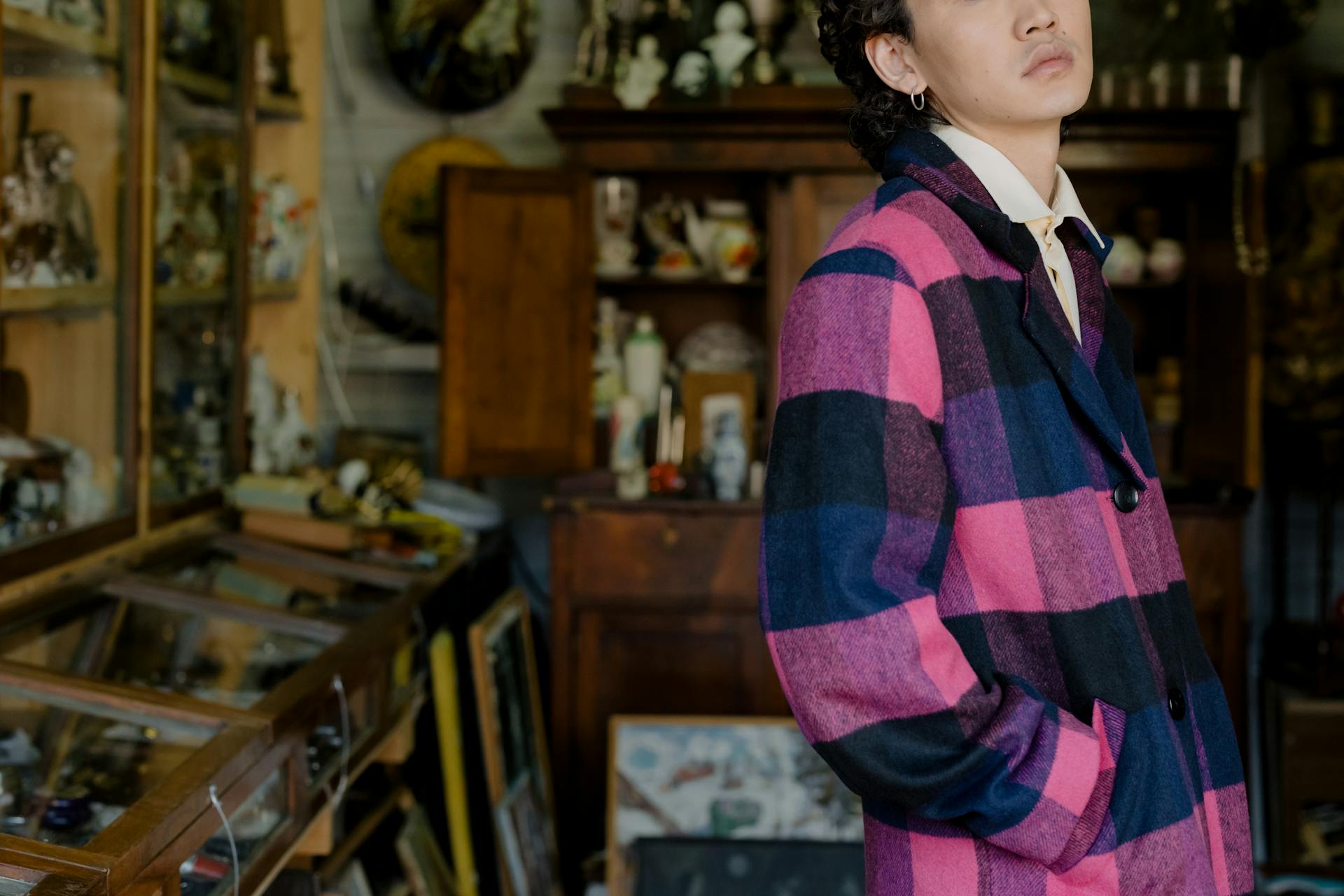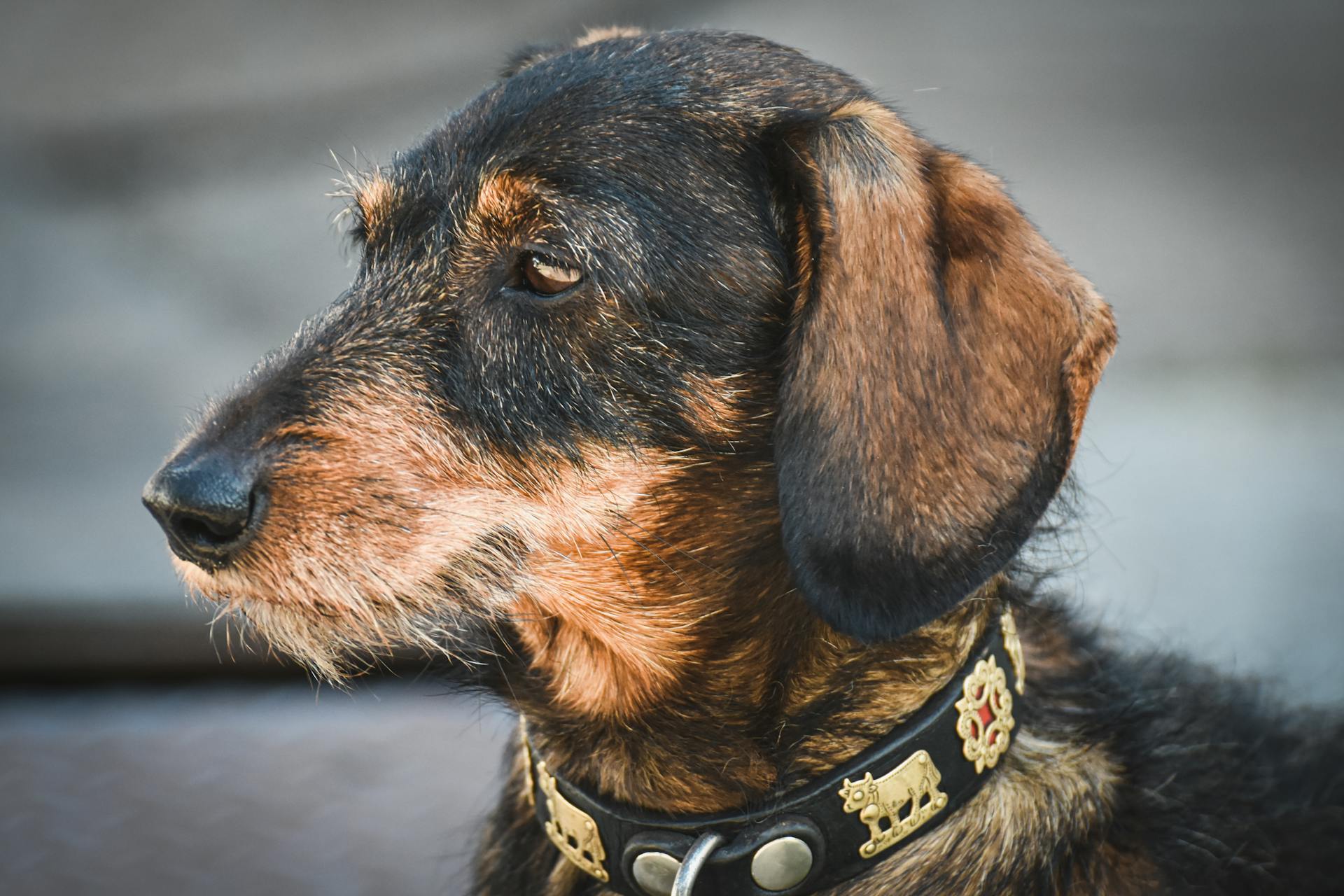
Pembroke Corgis come in a variety of colours, but have you ever wondered what genetics are at play to create these beautiful hues?
Red Pembroke Corgis get their colour from a dominant gene that codes for the production of the pigment phaeomelanin, which is responsible for the red and yellow colours in their coats.
The genetics of Pembroke Corgi colours are complex, but essentially, the interaction of multiple genes determines the final coat colour.
Consider reading: Sable Pembroke Corgi
Coat Color Variations
Non-standard colors can happen in Pembroke Welsh Corgis by accident due to recessive alleles, and these dogs can carry and pass on these traits for generations.
Recessive traits can only be expressed in dogs that have inherited one copy from each of their parents.
In purposefully color-bred dogs, a color or pattern deviating from the standard is often achieved by crossbreeding and introducing a new trait on purpose.
The major kennel clubs often use their own standards provided by their affiliated breed club, but these standards are usually similar in their general outline.
Here's a list of recognized colors by major kennel clubs:
Fawn, red, sable, black tricolor, and saddle tricolor are the recognized colors by major kennel clubs, but remember that non-standard colors can occur due to recessive alleles.
Recommended read: Red Headed Tricolor Pembroke Welsh Corgi
Colors
Pembroke Welsh Corgis come in a variety of colors, including fawn, red, sable, black tricolor, and saddle tricolor.
The AKC, FCI, and KC all recognize fawn, red, sable, black tricolor, and saddle tricolor as official colors for the breed.
Fawn Pembroke Welsh Corgis have a clear sable coat with a yellowish to strawberry blond or light red phaeomelanin intensity, and can have some shading in their puppy coat that clears into solid fawn within the first few months after birth.
Red Pembroke Welsh Corgis are also clear sable, but with a red phaeomelanin intensity that comes in shades from a rich tawny red to a deep orangey fox red.
The term "sable" refers to any dog with a shaded sable pattern, which can have varying amounts of black-tipped hair and a widow's peak on the forehead.
Pembroke Corgis can also have a "red-headed tri" pattern, where a saddle pattern with white markings develops into a red-headed tricolor as the dog matures.
In contrast, a black-headed tricolor Pembroke Welsh Corgi has a normal tan point pattern with red markings on the cheeks, above the eyes, on the chest, lower legs, and under the tail.
Here's a breakdown of the recognized colors and their characteristics:
It's worth noting that while these colors are recognized by kennel clubs, some non-standard colors can occur in Pembroke Welsh Corgis due to recessive alleles.
Silver
The Silver variation is a rare and unique phenomenon that can occur in some dog breeds. It's characterized by a light phaeomelanin that gives the dog a silverish or cream-white appearance.
In sable-patterned dogs, this can happen even if their parents are normal fawn or red, with black hair tips but very low contrast between their body coat and white markings.
This makes them look mostly pale off-white, which is quite different from their expected coat color.
Here's an interesting read: Pembroke Welsh Corgi Black and White
Rare and Unique Colors
Non-standard Pembroke Welsh Corgi coat colors can happen in any dog breed, and sometimes they occur by accident due to recessive alleles.
Dogs with only one copy of a recessive trait can carry and pass it on for generations, which means these unique colors can persist even if they're not intentionally bred.
In purposefully color-bred dogs, a non-standard color or pattern is often achieved by crossbreeding and introducing a new trait on purpose.
You might like: Service Dogs
Non-Standard Coat Colors
Non-standard coat colors can happen in any dog breed, including the Pembroke Welsh Corgi.
These non-standard colors occur by accident due to recessive alleles, which are traits that can only be expressed in dogs that have inherited one copy from each of their parents.
Dogs with only one copy of a recessive allele can carry and pass on these traits for generations.
In purposefully color-bred dogs, a color or pattern deviating from the standard is often achieved by crossbreeding and introducing a new trait on purpose.
Worth a look: Pembroke Corgi Info
Bluie
A Bluie Pembroke Welsh Corgi is a rare and unique dog with a gray coat color caused by a gene variant for color dilution.
This color dilution is inherited from both parents, who must pass on the gene variant for D/d to produce a Bluie puppy.
The Bluie gene variant causes the production of blue pigment instead of black pigment, resulting in a slate gray nose leather, lips, or eye rims.
Bluie puppies are born gray because their dark hair tips are blue, and their eyes are pale, later darkening into hazel, amber, or grayish blue.
The Bluie color can occur in any coat pattern, such as red or sable, resulting in a "Red Bluie" or "Sable Bluie" respectively.
Bluie dogs have blue or pale greenish, amber, or hazel eyes due to the color dilution on the D-Locus.
You might like: Blue Heeler Corgi Mix Size
Color Combinations
Pembrokes come in a variety of colors, including red, sable, black, tri-colored, and fawn, usually with white markings.
You'll often see a "fairy saddle" marking on a Pembroke's back, which is caused by a change in thickness and direction of a strip of hair.
Some Pembrokes have fluffy coats, long with excessive feathering on the ears, chest, legs, and feet.
Tri-colored Pembrokes are a beautiful combination of black, white, and tan, making them a popular choice among Pembroke owners.
The color combinations on a Pembroke's coat are determined by their genetics, but grooming has no effect on their color.
Their coat color may change slightly over time, but regular grooming can help keep their coat looking its best.
Pembrokes can also have a "fawn" color, which is a light brown or tan color, often with white markings.
Suggestion: Black and White Cardigan Corgi
Genetics and Color Production
Pembroke Welsh Corgis get their colors from two pigment types: eumelanin and phaeomelanin. The combination and proportion of these pigments create different patterns.
Eumelanin is responsible for black and dark brown colors, while phaeomelanin produces red and yellow hues. The interaction between these two pigments determines the overall color of a Pembroke Welsh Corgi.
Here's a breakdown of the genes and alleles involved in Pembroke Welsh Corgi color production:
Understanding these genes and alleles helps explain the wide range of colors and patterns found in Pembroke Welsh Corgis.
Genetics
Genetics plays a crucial role in determining the coat colors of Pembroke Welsh Corgis. The colors are determined by two types of pigments: eumelanin and phaeomelanin, which interact in different proportions to create various patterns.
Non-standard colors can occur in Pembroke Welsh Corgis due to recessive alleles, which can be inherited from parents. These non-standard colors can be carried and passed on for generations, even if the dog doesn't express them itself.
Recessive traits can only be expressed in dogs that inherit one copy from each parent. This means that a dog can be a carrier of a recessive trait without showing it, but can still pass it on to its offspring.
The E-LOCUS gene determines the presence or absence of a melanistic mask, with E being normal and e being recessive red. The K-LOCUS gene determines the normal pattern, with k being the dominant form.
Here's a breakdown of the genes and alleles involved in the Pembroke Welsh Corgi's standard coat colors and patterns:
Pembroke Welsh Corgis should have black pigment (B/B D/D), but a small number of dogs express color dilution, known as Bluies.
Phaeomelanin Intensity
Pembroke Welsh Corgis can have phaeomelanin intensity ranging from yellowish and tawny colors to orangey and deep shades of red.
Their coats can have a wide range of phaeomelanin intensity, from light to dark, which is determined by the genes and alleles involved in color production.
The phaeomelanin intensity in Pemmies is called either fawn or red, and it's a key factor in determining their overall coat color.
Pembroke Welsh Corgis can have countershading turning some of the red pigment to off-white, but this mainly happens in areas already covered in white by Irish markings.
To spot countershading, look at the edge between white and red on the face or the lighter areas above the eyes.
Here's a breakdown of the phaeomelanin intensity in Pembroke Welsh Corgis:
It's worth noting that phaeomelanin intensity can vary between individual dogs, even within the same litter.
Color Patterns and Markings
Pembroke Welsh Corgis come in a variety of coat colors and patterns, but all have one thing in common: brown eyes, a black nose, and black pigment on their lips, eye rims, paw pads, or nails.
The most common coat colors are red, sable, black, tri-colored, and fawn, often with white markings. Red-headed tricolor Pembroke Welsh Corgis have a unique pattern where the red markings expand over time, replacing most of the black from the original pattern.
Black-headed tricolor Pembroke Welsh Corgis, on the other hand, retain their markings into adulthood, with a normal tan point pattern and red markings on the cheeks, above the eyes, on the chest, lower legs, and under the tail.
Red-Headed Tricolor
Red-Headed Tricolor Pembroke Welsh Corgis are a unique variation of the breed, characterized by a red-headed tri color pattern. This pattern is created by a genetic variation that causes the red markings to expand over time, replacing the original black coat.
As puppies, Red-Headed Tricolor Pembroke Welsh Corgis are born with solid black coats and small tan point markings. These markings will gradually expand as the dog matures.
In adult Red-Headed Tricolor Pembroke Welsh Corgis, the black coat is mostly replaced by red, with the back of the ears and head remaining red. This is a distinctive feature of the breed.
Red-Headed Tricolor Pembroke Welsh Corgis often retain a cap of black hair on the top of their head, which is sometimes referred to as a "cap". This is a characteristic that sets them apart from other Pembroke Welsh Corgis.
White Spotting
Historically, dogs without white in their pattern were very common.
Almost all Pembroke Welsh Corgis today express some white markings in their pattern.
Irish spotting, which can form a narrow blaze and a partial or full collar around the neck, is a common white marking in Corgis.
True Irish markings are not caused by any of the testable spotting traits.
Dogs may test as S/S, but it's not a guarantee of Irish spotting.
Whitehead patterns and piebald spotting are considered mismarks and are rare in Corgis.
These traits can cause "Whitelies" patterns with extended white markings that grow into the colored areas on the back and flanks.
Extended head white, although rare, can cause blue eyes in some Pembroke Corgis.
Worth a look: Welsh Corgi Black and White
Distinguishing Between
Pembroke Welsh Corgis have a more limited range of color patterns compared to other breeds.
They only come in four different color patterns, which is a distinctive characteristic that can help you tell them apart from other breeds.
Cardigan Welsh Corgis, on the other hand, have a wider variety of colors.
Their ear shape can also be a giveaway, as Pembrokes tend to have pointier ears at the tips.
A smaller size and straighter legs are also common in Pembrokes, making them distinct from their Cardigan cousins.
One physical characteristic that's often noticeable is the tail, which is typically bobbed or shorter in Pembrokes.
Frequently Asked Questions
What is the best color for Corgi?
While personal preference plays a role, many Corgi owners and breeders agree that a sable coat is a timeless and versatile choice for this breed. Sable Corgis often have a balanced and harmonious appearance that suits their energetic and affectionate nature.
What is the difference between a red Corgi and a fawn Corgi?
A Red Corgi has a darker, richer red coat, while a Fawn Corgi has a lighter, more beige-like red coat with a white base. The main difference lies in the intensity of the red color.
Featured Images: pexels.com


